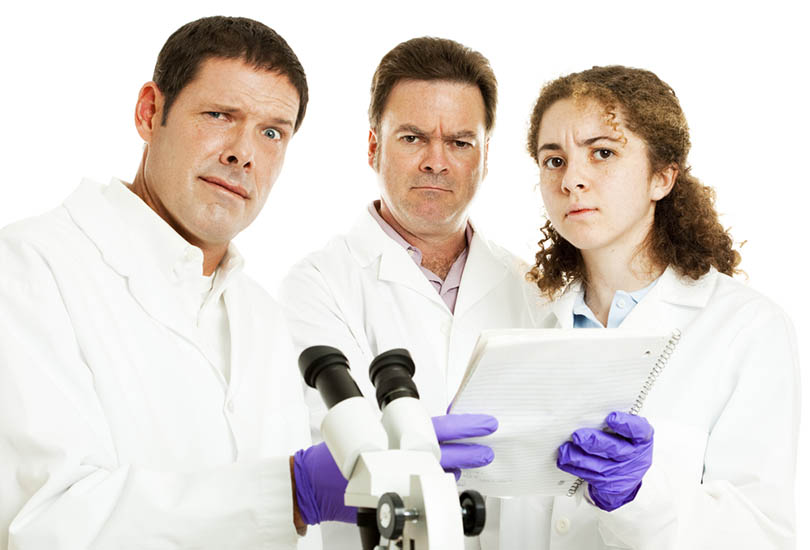The UK’s national drug regulator last month rejected an esketamine-based nasal spray that would have cost the National Health Service—and, by extension, the British taxpayer—almost £1,000 per patient per weekly dose.
At discounted rates, the same treatment costs almost $3,000 in the U.S. for the first month alone. Unusually, in this case, the drug maker—Janssen, a subsidiary of U.S. pharma giant Johnson and Johnson—responded to the decision by calling it, the evaluation process and, by implication, the regulatory agency itself “not fit for purpose.”
First reported in the national Mail on Sunday, the row is notable because the UK’s Royal College of Psychiatrists, the field’s professional and lobbying association, not only joined in but took the drug-maker’s side, accusing the agency of being “unreasonable” in rejecting esketamine for NHS treatment on the basis of high cost and required hospital supervision. The decision was said to “discriminate” against patients with acute depression.
 Esketamine is a high-strength form of ketamine, a powerful and addictive dissociative anesthetic approved in the U.S. since 1970 for limited use in humans and animals. Ketamine, its S-enantiomer, is frequently associated with dissociation, disturbances in consciousness, and major changes to personality and mood. It is widely abused as a street drug (“special K”) popular among clubgoers for its hallucinogenic effects, among them “K-holes” (lengthy trance-like states). The drug has been tied to a number of cases involving violent sexual assault.
Esketamine is a high-strength form of ketamine, a powerful and addictive dissociative anesthetic approved in the U.S. since 1970 for limited use in humans and animals. Ketamine, its S-enantiomer, is frequently associated with dissociation, disturbances in consciousness, and major changes to personality and mood. It is widely abused as a street drug (“special K”) popular among clubgoers for its hallucinogenic effects, among them “K-holes” (lengthy trance-like states). The drug has been tied to a number of cases involving violent sexual assault.
“Esketamine is expensive, and the adverse effect profile is worrying,” commented Joanna Moncrieff, Professor of Psychiatry at University College London, in the newspaper. “I think the push for it is primarily coming from the pharmaceutical company and psychiatrists who want to find a drug to solve problems that medication can’t fix.”
The Royal College of Psychiatrists chose to emphasize via a spokesperson: “We are disappointed in NICE’s decision. In relation to our appeal, all rules on declaring conflicts of interest were abided.”
The attention to COIs may be connected to Oxford University psychiatrist Rupert McShane agreeing to represent both Janssen and the Royal College at a formal appeal later this month. He has sat on advisory boards for the drug-maker, worked as a researcher in trials of its product Spravato, and written media articles arguing that esketamine and other hallucinogens “might be used to heal instead of harm.”
In the same articles, McShane also claims that focus on ketamine’s adverse events is responsible for “ideologically-driven myths and stigma” about the drug, despite his confirming in the British Medical Journal that “there are almost no data on the long-term safety of repeated use” and that “we do not know how use of licensed esketamine will play out in the real world.”
Arguably, we do.
In that same world, Janssen is known to be a major financial donor to prominent UK psychiatry departments. To highlight one, a 2019 Freedom of Information request determined that between 2013 and 2017, the drug-maker made twelve payments to the Institute of Psychiatry, Psychology, and Neuroscience at King’s College London totaling £1,904,784, of which £163,635 was earmarked for the study of esketamine. The FOI covered until 2017 and could not assess if the payments continued.
On the U.S. side, the controversy and COIs are equally prominent and concerning. According to Kaiser Health News, a key reason the U.S. Food and Drug Administration (FDA) approved esketamine for “treatment-resistant depression” (with a black-box safety warning about suicide ideation and required monitoring for adverse effects) was because “in late 2013, Janssen got the FDA to designate esketamine a “breakthrough therapy” that showed the potential to reverse depression rapidly.”
Responsible for the drug’s fast-tracking, the potential the agency had identified was based on “a two-day study during which 30 patients were given esketamine intravenously.”
Subsequently, when the FDA met in February 2019 to assess “the efficacy, safety, and risk-profile of esketamine as a nasal spray device,” at least two of the approving votes, Kaiser Health News determined, were tied to the drug’s earlier “breakthrough” status, despite stated qualms about the quality of the data received. These, in turn, were found to be at marked variance with the results of trials conducted independently of the drug maker.
A Line of Red Flags
The data that Janssen submitted received FDA approval only because the agency agreed to revise its criteria for efficacy downward, accepting a discontinuation trial for one meant to indicate positive efficacy.
The agency’s Briefing Document alludes to lengthy negotiations over the duration of trials included. All but one was capped at four weeks rather than the standard six-to-eight weeks normally required for approval, leaving researchers insufficient data to gauge the drug’s longer-term effects. Arguing for the trials to be even shorter, Janssen had to be strong-armed into covering “a treatment period of at least four weeks, to assess for persistence of effect.”
In later commentary such as “Esketamine for treatment-resistant depression: A trick of smoke and mirrors?,” researchers free of Janssen COIs re-analyzed the FDA data and determined “they do not match author expectations.”
“Of three randomized trials submitted to the FDA,” wrote Chiara Gastaldon and colleagues at the University of Verona, Italy, “only [one of the studies] was able to demonstrate the superiority of esketamine over placebo.”
Although that study’s 4-point reduction relative to placebo on the Montgomery-Asberg Depression Rating Scale (MADRS) technically met the threshold for statistical significance, according to Gastaldon and colleagues its real-world “clinical meaning seems very uncertain.”
In addition, the FDA had “accepted studies that did not compare esketamine against the only available FDA-licensed gold standard.”
Of the six deaths that occurred in the drug arm of other esketamine studies, three of them suicides, the agency upheld Janssen’s assessment that it was “difficult to consider the[m] drug-related” (Briefing Document 2019 42). Three had occurred, respectively, 26 hours, five days, and six days after esketamine administration, two of them showing “no previous signs of suicidal ideas during the study.”
In a separate suicide attempt, this time in a Toulouse, France, hospital where four patients were treated with esketamine, one patient “attempted to jump from the third floor, which required hospitalization in psychiatry.” The episode occurred “one hour after the administration of esketamine.”
Among the reasons the episode and deaths are so concerning: Janssen had sought expanded use of esketamine specifically to include suicidal patients.
Concerning ketamine and suicide ideation, a study published earlier this year in the BMJ showed negative-to-concerning outcomes, as Peter Simons reported in Mad in America, with data indicating “that ketamine was ineffective for both depression and other disorders, that the effects even for bipolar disorder were temporary, and that it did not reduce actual suicide attempts.”
Other analyses of the trials confirmed that the FDA had “loosened its rules” over esketamine approval because the drug-maker “could not provide two positive efficacy trials.” The inclusion and design of the discontinuation trial further confused relapse with withdrawal in a drug widely “recognized to have withdrawal effects.”
Horowitz and Moncrieff also underscored the large range of additional side effects recorded across trials: “Half of the participants (48.3 percent overall) experienced dissociation and one-third dizziness. Increased blood pressure, hypoesthesia (sensory numbness), nausea, and sedation were each present in between 10 and 30 percent of participants.”
They concluded: “A known drug of misuse, associated with significant harm, is increasingly promoted despite scant evidence of efficacy and without long-term safety studies.”
“Do the Benefits Outweigh the Risks?” (FDA Researchers)
Not discussed in the commentaries, but a recurring concern in the 135-page FDA Briefing Document, are reports of serious liver damage in patients prescribed esketamine longer term:
“A total of 28 hepetobiliary events occurred among the 20 cases … ranging from asymptomatic elevation in liver enzymes to irreversible structural damage to the liver or biliary system and/or clinical signs of liver failure…. We find an association between ketamine and a range of hepatobiliary events in the context of off-label, repeated use.”
Researchers also underscored:
“In 2017, the French National Agency for the Safety of Medicines and Health Products published a [warning] regarding the risk of severe liver damage during repeated and/or prolonged use of high-dose ketamine. The letter reported ten cases of serious liver damage (cholestatic cholangitis), including four cases requiring liver transplantation, since 2014.”
As would the FDA, a study by Srirangam and Mercer also found that “serious and frequently irreversible damage to the urinary tract is a recently recognised side effect of recreational ketamine use,” with consequences including “ulceration and active bleeding from most of the urothelium with a significantly reduced functional bladder capacity.”
Further conclusions by the FDA worth underlining in the context of safety:
- “Ketamine dependence and tolerance are possible following prolonged administration. A withdrawal syndrome with psychotic features has been described following discontinuation of long-term ketamine use.”
- “It appears that treatment with esketamine leads to dissociation … noted immediate effects such as dissociation (for a majority of subjects, with rates as high as 75 percent) and sedation upon dosing, that do not dissipate with time according to the safety data reviewed.”
- “None of the studies prospectively examined long-term persistence of cognitive effects resulting from repeated exposure to ketamine.”
Reports by Patients
Although neither definitive nor free of outside influence, the adverse reports on Spravato (esketamine) at Drugs.com repeat so many shared themes that they justify sampling. Fully 30 percent of users report a negative experience:
“On Spravato I felt like I was going to die. It took 4 minutes to kick in. I couldn’t feel my face, couldn’t speak, couldn’t breathe, the room was spinning … I was sweating / felt like I was sinking, mind racing, nauseous. I felt like I was strapped to a Ferris wheel that wouldn’t stop spinning / falling really fast…. I couldn’t move…. It was really scary.”
Another: “About 10 minutes or so [after the second dose], I began to feel like I was falling, spinning and losing my mind, completely out of control. I sat there for almost 4 hours absolutely terrified. Terrified that I would never feel ‘normal’ again, that I would die, I would lose everything I cared about. I cried in fear and begged the person who gave me the medicine to make it stop.”
A third: “I became very aggressive and hostile. The actual process of taking the drug was a miserable experience. The taste was horrible and made me horribly nauseated.”
A fourth: “I completely changed into another person. I went into a major psychosis and ended up in the psych ward five times at the end of December to mid February. It was horrific and terrifying.”
A fifth: “The drug experience is horrible. After I spray it in my nose and it begins to take effects I pray it will end. The feeling is so horrible. I want to throw up, I can’t physically move, I can’t assess where I am, I can’t ‘sense’ anything but I am aware of how bad I feel and pray it ends.”
The Rise and Rise of Ketamine Clinics
A 2017 survey referenced by the FDA found that 1.3 percent of respondents aged 12 and older reported using ketamine during their lifetime, corresponding to an estimated 3.4 million U.S. residents.
Between 2013 and 2017, the same period covered by the FOI request reported earlier, ketamine sales, the FDA determined, “increased approximately 72 percent overall and sales to clinic settings, specifically, more than doubled during this five-year period.”
Regarding the more than 500 ketamine clinics in the U.S. now dispensing the drug as a first-line treatment for major depression, at doses frequently higher than the FDA supports, the data are even-more granular: “The number of vials sold more than doubled, from an estimated 332,000 vials sold in 2013 to 765,000 vials sold in 2017.”
Consider the consequences of a similar trajectory for esketamine: Rupert McShane writes that “1 in 6 adults in England have taken an antidepressant in the past year and a third are treatment resistant.” Yet as Ioana Cristea and Florian Naudet observed in The Lancet Psychiatry following the FDA’s decision, “Treatment-resistant depression is marred by diagnostic ambiguity regarding the nature and number of failed treatments, as well as by significant heterogeneity. The concept itself misleadingly implies developing sensitivity to a highly effective treatment (eg, antibiotic resistance), whereas most antidepressants show only modest benefits over placebo and thus might not be effective to begin with for many patients.”
As much a comment on the common failure of SSRI and SNRI antidepressants as about the need for workable, nonpharmaceutical alternatives, the decision to approve esketamine for treatment-resistant depression on the basis of loosened criteria accommodating data that still failed to show clinically meaningful results is one the FDA urgently needs to revisit. As in the UK, the row over esketamine’s track record, efficacy, and adverse effects requires a full reassessment of its path to approval.
Author’s Note: The author wishes to thank James Davies, Mark Horowitz, Martin Plöderl, and John Read for sharing published and unpublished research.















“About 10 minutes or so [after the second dose], I began to feel like I was falling, spinning and losing my mind, completely out of control. I sat there for almost 4 hours absolutely terrified. Terrified that I would never feel ‘normal’ again, that I would die, I would lose everything I cared about. I cried in fear and begged the person who gave me the medicine to make it stop.”
Sounds promising for covert administration by police before causing ‘acute stress reactions’ and interrogations. And works much faster than benzodiazepines?
It would thus save waiting for the person who had been ‘spiked’ to collapse before having police raise them back to consciousness with a tazer. So be careful refusing to speak to someone at a counselling service, they have powers you can only dream of having.
The approval would be required to enable doctors to prescribe the drug post hoc and make it the “Regular Medication” of the person being interrogated (to conceal what would be considered an act of torture by making it ‘medical care’ and the person who is now exhibiting symptoms of a mental illness an “Outpatient”)….. though with after the fact due process, and legal narrative “editing” by the State, anything is possible.
“I have no reason to suppose that he, who would take away your liberty, would not when he had me in his power, take away everything else” John Locke.
Report comment
A friend of mine died at age 29 from blunt trauma after jumping off a 43m (~120ft) tall bridge onto a paved sidewalk while under the influence of ketamine. His ketamine addiction had been fueled by the pseudoscientific research into its supposed anti-depressent effects. I could not comprehend his death until I stood on the bridge looking down on his blood crudely covered up with sand.
RIP T.L.
Report comment
I wonder if l-glutamine antagonizes ketamine the way it antagonizes phencyclidine (PCP).
Report comment
I don’t like to say “I told you so,” but … https://www.baltimoresun.com/opinion/op-ed/bs-ed-op-0317-miracle-drug-20190313-story.html
Report comment
Wow, great article, Patrick! I’m kind of surprised they published it. Your analysis of the actual trial data is very informative. I only wish that more people would think with that kind of information. If you did a hundred trials, and 80 were negative, 18 were neutral, and two supported the “treatment,” you could still apparently get it through the FDA???? And they didn’t even manage to get TWO positive trials! I’d bet Jack Daniels would meet statistical significance in a four-week, controlled dosage trial. Why do we allow this antiscientific nonsense?
Report comment
I don’t know about this particular formulation Ketamine, but I feel an obligation to say that I found Ketamine extremely beneficial. I found the short-lived experiences themselves frightening but the result was life-changing.
What I find worrying from this article is the weekly treatments that this particular formulation of Ketamine requires. Once depression has lifted and not feeling like hell has stabilised, – for me within a few weeks – maintenance, if needed, can be widely spaced. What people need is to focus on their lives, because this is about life, not about 25 minutes of (IM ketamine – in my situation) drug experience.
Anguish extended is pure hell. I wasn’t able to overcome it by any other means.
I strongly object to an implicit argument that anyone should accept hell over an extended period, or even for the rest of their lives as their fate. We are entitled to at least find out if a few brief ‘trips’ can return us to life outside of hell, (with all of its inevitable sorrows and pains).
The experience of hellish pain is often a part of life’s mix for all of us. But if it does not ease back down to manageable pain, and finally, relent, we have a right, (and, I suggest a moral imperative) to seek a new solution unfettered by moral policing about how we should get over, or accept it.
Unrelenting hell kills many people, and Ketamine is able to lift some people out. I have huge respect for those who through great struggle, deliver themselves. I wasn’t able to, but not for want of trying.
Report comment
I am not arguing against anyone using Ketamine as a means of relieving their suffering. It is apparent that this works for some people. But to try and codify what appears to me to be essentially a spiritual experience, to market it and sell it at huge cost to people while representing it as “the latest breakthrough” without mentioning that it won’t help everyone and can be harmful and that similar or better processes are quite possibly available through religious/spiritual practitioners is very damaging. There are lots of ways for people to get help for their situations, and everyone responds differently to whatever approaches are taken. The sooner the psychiatric world cottons on to this fact, the more likely it is they might actually be helpful to people. There’s a big difference in my mind between trying something and seeing if it works and selling a supposedly scientific “treatment” based on flimsy evidence and a lot of marketing.
Report comment
My argument was not about anything other than the right for people to access something that might release them from extreme anguish – it was not about the experience of Ketamine – but about life outside of it. My argument is founded in my own experience of the outcome, not about the experience of Ketamine.
To say the experience is spiritual and that there are other routes to spiritual experience is moot for me. I did not experience anything ‘spiritual’ but no matter what the brief experience consists of, and how it is conceptualised, what I am saying is this an important human right.
I was not talking about informed consent and the safety of the proctocols surrounding administration, nor about price, or who or what body should be permitted to administer such treatment and under what conditions. Obviously these are important but my only comment in relation to them was about frequency of administration and to emphasise what to me is most important – our lives.
There is a world of discussion to be had about the danger of treatments that don’t actually restore health turning into the central pillar of our lives, and the resulting thought-mess for all concerned.
And I want to emphasise that I’m talking about health not as some kind of guarantee about life but as just one freedom that might allow it to be broadly explored. (Beyond relentless and life-limiting suffering.)
It feels to me that the arguments are circular – Ketamine treatment is medical, and it is spiritual, ie about accessing spiritual experiences that can be accessed by safer, (morally acceptable) means. If not one then the other and round and round. There have been other moral or moralised issues caught in the same loop. Science or spirituality or science……..
Spiritual experiences, if they are truly spiritual cannot be accessed at will. By definition. No matter the faith or belief, practices may make such experiences more likely, but they are ultimately not amenable to the will of the small person.
My own pre-existing spiritual practice of several years did not provide release.
I hope you know that I say all of this this with the greatest of respect for you Steve.
Report comment
I share your experience @outof. Decades of suffering from major depressive disorder. In 2018, out of desperation to find relief, I started ketamine infusions. They provided relief from the depression which allowed my talk therapy to be significantly more effective.
In my case, my recovery started around the time we lost our older son in 2019. Then, “dark night of the soul” through the pandemic thanks to chronic serotonin syndrome in 2020 due to overmedication (due to not knowing why I was so anxious).
Once I got to that point, I started digging my way out with lots of active involvement in my healthcare (mental and physical) and lots of introspective therapy. Through all that, I discovered my autism (well, there’s a bunch of bottled-up anxiety for ya!) and my traumatic childhood leading to cPTSD and DID.
We worked through the traumas, got off almost all the meds, and are depression-free for the first time since early 20s (we’re now 56). After all that, we are finally what we consider mentally healthy. We are also acutely aware of how our medical professionals were not looking at us holistically, and how that was harming us.
Report comment
I’m very sorry for the loss of your son. There are no words.
So glad you found freedom from that seemingly impenetrable barrier.
Report comment